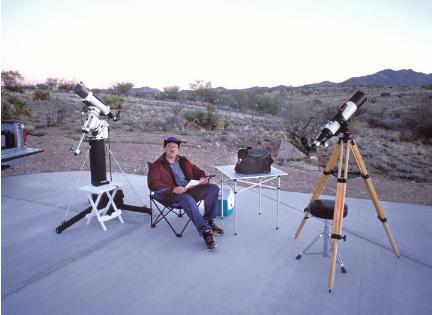Order of Objects Observed
for Messier Marathon
8 p.m......74, 77, 52, 31/32/110, 33, 103, 111/112, 76, 34
9 p.m......79, 41, 42/43, 78, 45, 1
9:30 p.m......36, 37, 38, 35, 50, 46/47, 93, 48, 67, 44
10:15 p.m......95/96/105, 65/66
10:45 p.m......81/82, 97/108, 109, 40, 106, 101, 102, 51, 63, 94
11:15 p.m......3, 53, 64, 104, 68, 83, 5, 13, 92
1 to
1:30 a.m or earlier......Virgo Galaxy Cluster 85, 100, 99, 98, 88/91, 89/90, 58, 59/60, 87, 84/86, 49, 61
2 to 3 a.m......12, 10, 107, 80, 4, 14, 57, 56, 9, 19, 62, 29, 39, 27, 71
4 a.m......11, 26, 16, 17, 18, 24, 25, 23, 20/21, 8, 22, 28, 6, 7
4:30 a.m......54, 70, 69, 55, 75, 15, 72/73, 2
5:15 to 5:30 a.m......30
Notes
1. Start when it first gets dark at your location. The actual starting time (as well as the other times indicated) will vary depending on your latitude and location in the time zone.
2. The Virgo Galaxy Cluster will be on or near your southern meridian at about 1 to 1:30 a.m. If you are manually trying to find the Messier objects, this is the best time to observe this set of galaxies because the up and down and left to right motions of most manual telescopes correspond to the same orientation of star charts.
3. Starting with the 2 a.m. group, don’t dilly-dally from this point on because dawn will sneak up on you fast. Work ahead as much as possible.
4. Often, either M74 (1st object at 8 p.m.) or M30 (last object at 5:15 a.m.) may not be observed because they get lost in the glow of sunlight. However, they may be visible and located with a “larger” telescope on a GO TO mount.
Messier Marathon Checkoff List
